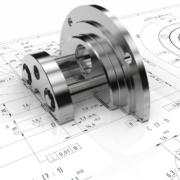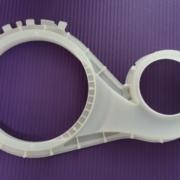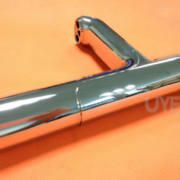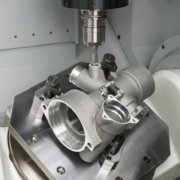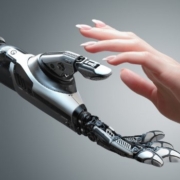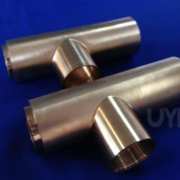Why Choose CNC Machining For Your Metal Prototype?
CNC machines eliminate the need for mills, grinders, lathes, and routers required for traditional machining. However, computer numerical control is fundamentally different from personal computers regarding the software used to operate the machine. This software is written in G-code and is machine-specific. G-code is a unique CNC machine language that enables exact control of parameters such as feed rate, coordination, speed, and placement. These are the characteristics that CNC machines must-have.
The G-code-enabled software runs on a computerized system that resembles a sophisticated desktop. Thus, in the case of CNC machines, specialized software controls a computerized machine.
A programmer will sit at the computer terminal to command the machine, which is analogous to the task of multiple operators who sit and operate lathes, routers, grinders, shapers, and mills. Thus, it is feasible to obtain very effective holds and reaches, which is difficult to do when combined with human operators and traditional machining.
Due to the increased demand for huge things, most producers choose CNC machining companies. Because CNC machines can automate the task, even when several cuts are required, they are often both time and cost-efficient.
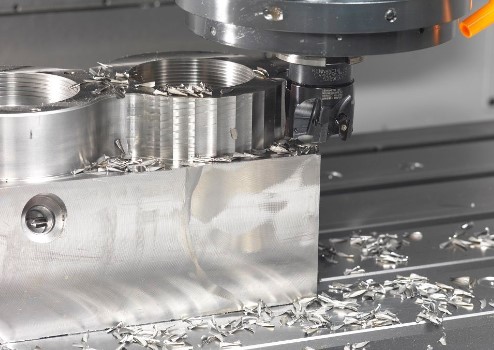
CNC is superior to traditional methods:
Both traditional and CNC machining attempt to produce the same product and utilize the same raw material, yet there are several distinctions between the two.
Factors that make CNC superior to traditional methods:
- The primary distinction is their nature. CNC machining is fully mechanized, while traditional machining is entirely manual.
- CNC machining offers several difficult advantages with traditional machining, including increased accuracy, production rate, and speed.
- With CNC machining, an individual may operate while seated at a computer. However, in the case of typical construction, the same experienced person must use the full system in conjunction with a large number of additional employees to complete the project.
- In the case of a traditional machine, the manual worker will also be responsible for setting the gears. However, CNC machining does not need these gears.
- It’s important to realize that traditional machining is less expensive just for low-quality jobs. However, for large-scale applications, CNC machining is more cost-efficient.
In the case of CNC machining, they use 2D or 3D models created by CAD or computer-aided design. They create the final part’s model. It is the prototype that will be utilized as the software’s input. The software is controlled by a computer and assists in directing the machining equipment used to fabricate the component.
CNC machines provide the following advantages:
CNC machining may be beneficial for manufacturers specializing in producing plastic and metal products. CNC machines provide many advantages for enterprises and all types of goods.
Some of the notable advantages of CNC machining are:
Precision
CNC machining delivers accuracy based on autonomous machining capability and utilizes digital templates. When CNC machining is employed, the likelihood of a human mistake is quite low.
Reliable
CNC machines can work around the clock. They are available to work weekends and holidays as well.
Scalable
Once the specification is determined, and the design parameters are input, the CNC machine begins to operate consistently. As a result, it will execute items in large numbers without delay. They are constantly scalable and provide a degree of adaptability.
Capable
In the case of CNC machines, output duplication is really simple. We may use the same design software to scale up manufacturing. Contrary to normal machining, this is not the case. Replication is difficult with traditional machining. In the case of CNC machining, advanced software can accomplish almost any task, which is not simple for even the most brilliant engineers. CNC machines can produce components with almost any texture, shape, or size.
Reduced Labour
CNC machining companies require less work or workforce to complete tasks. A single skilled individual can operate a large number of autonomous CNC machines. However, each machine must have a single operator for manual or traditional machines, and a group of operators must have a single supervisor.
Uniformity of the Product
We may precisely match the output of CNC machines. However, with normal machining, this is not achievable. Even the most talented employee cannot consistently deliver identical outcomes. Thus, in the case of CNC machines, the finished goods are identical to their prototypes.
These are some of the advantages of CNC machining that make it superior to other conventional methods.
Applications of CNC Machining for Prototyping
Numerous sectors now rely on CNC prototyping as the cornerstone for their rapid prototyping ideas, including the following:
Aerospace manufacturing
The aerospace sector evolves from ever-smaller and lighter drones to the components required to carry millionaires into space.
While 3D printing may be used to build proof of concept models, CNC machining is necessary to construct tested engineering prototypes using the materials we will eventually utilize to manufacture the final product.
These engineering prototypes must then be capable of meeting the particular tolerances required for testing under real-world circumstances. It is particularly critical in the case of aircraft’s critical parts, where the failure of even a tiny component may be devastating.
Automobile manufacturing
Like the aerospace industry, the automobile sector uses rapid prototyping and CNC machining as part of the manufacturing process.
The usage of CNC prototypes enables car manufacturers to design, test, and iterate on engine components using the materials that we will eventually use in the final product. New components may be rapidly modified and manufactured to meet the most rigorous geometries and tolerances.
Conclusion
Milling, turning, EDM, and wire EDM, as well as surface grinding, are among the CNC machining services we provide. With our precise 3-, 4-, and 5-axis CNC milling services, along with other sophisticated capabilities and experienced staff, we can handle all technical elements of prototyping and manufacturing your components, allowing your team to concentrate on getting your product to market.
If you’re looking for a precision machining firm specializing in CNC machining plastic and metal components, we are the place to go. Contact us immediately to get a quote and further information about your production solution.

